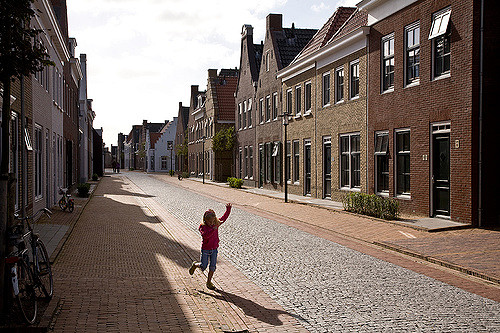
Bold move to kickstart an outdoor play renaissance in Canada
Last week the Lawson Foundation, a Canadian family foundation, launched an ambitious outdoor play strategy with the announcement of $2.7 million (£1.3 million; $US 1.9 million) in funding for 14 projects.
The strategy has an explicit and exclusive focus on unstructured outdoor play. Tackling risk aversion is a prominent theme, building on the Foundation’s recent support for a groundbreaking consensus position statement [pdf link] whose key message is that the biggest risk is keeping kids indoors.
The breadth of the programme is striking, with a bold mix of approaches, disciplines and geographical coverage. The projects cover community action, practice development, policy, research, capacity building and advocacy in a wide range of contexts: at home, in school, in child care, the community and nature. Interventions are aimed at municipal, regional and national levels. The inclusion of a Calgary project supporting the development of playwork provision aimed at 6-11 year olds is noteworthy, as is a project to support municipal leadership in the city in the run-up to the 2017 International Play Association conference – a key event in the global play advocacy calendar. Moreover, $230,000 – almost 10 per cent of the total budget – has been allocated for evaluation, so the prospects are good for others to learn from the initiative. It is refreshing to see a philanthropic funder that is willing to take such a strategic, long-term approach.
There are plans to convene the funded projects periodically to share and learn from one another – and I am pleased and honoured to say that the Foundation has asked me to join them at the first meeting, in Toronto in February. While I have not had any role in the initiative so far, on my visit to Canada last May I did meet a number of those who subsequently made successful applications to the programme. I am thrilled that the Foundation has given me the chance to come back to Canada, support its work and learn from everyone involved.
The timing of the announcement is also intriguing, just a few months after the election of a progressive federal government. I cannot help but reflect on my time at the Children’s Play Council (now Play England) and the doors that opened in the wake of the Labour general election victory in 1997 after a long period in opposition.
Whatever the historical parallels, the move is yet more compelling evidence of the growth in interest and action to expand the horizons of children in North America. It is early days, but the omens in Canada look good. The strategy not only has the potential to make a big difference in that country; it could also make funders and decision-makers around the world sit up and take notice of the importance of increasing children’s opportunities for self-directed play.
Retrieved from: RethinkingChildhood
Author: Tim Gill
Photo Credit: Photo by HankBar




